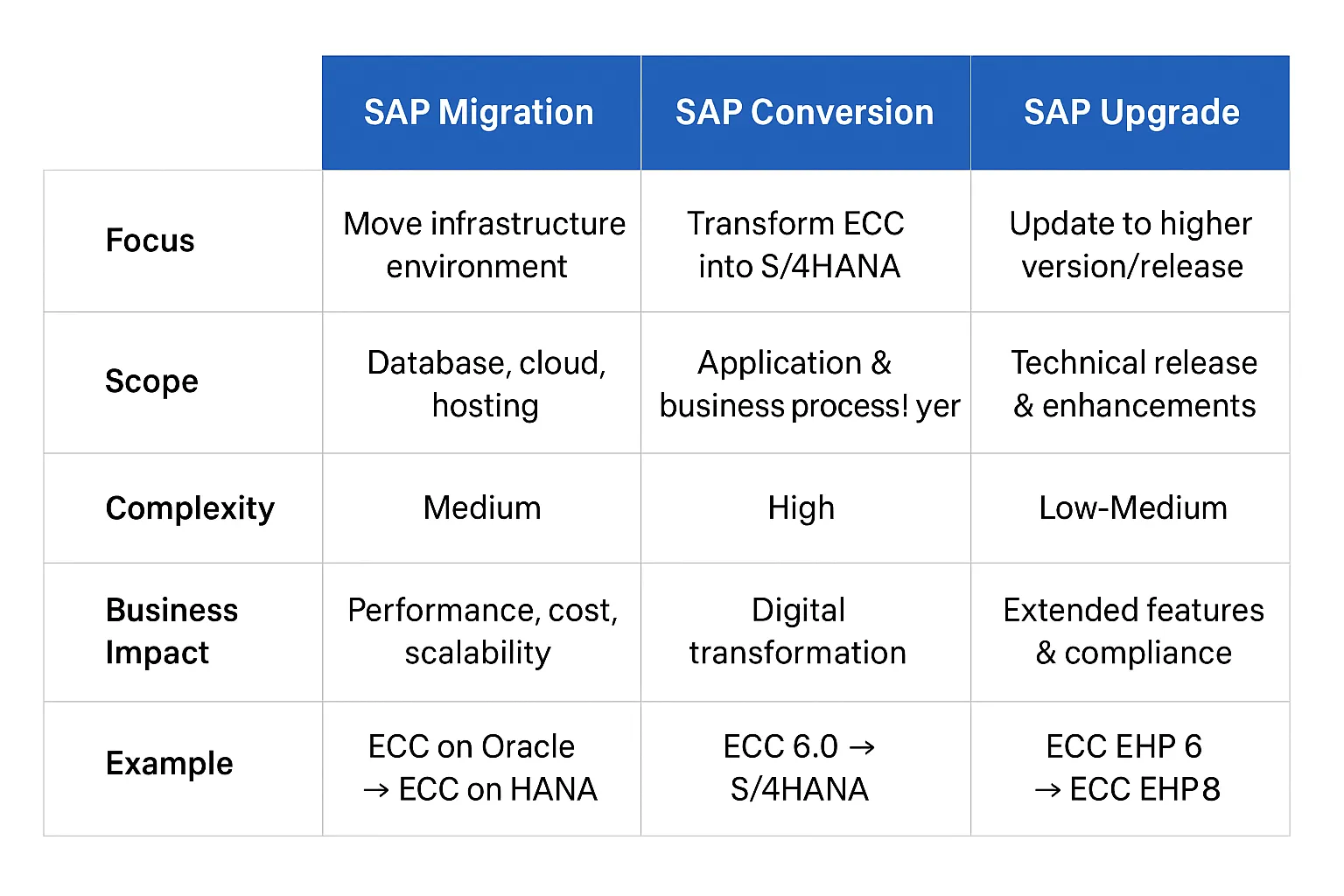TEAM SAP Vista
Typically replies in a few hours
Customer Care Team
Hi there
How can i help you today?
How can i help you today?

Start Whatsapp Chat


When organizations plan to modernize their SAP landscape, terms like migration, conversion, and upgrade are often used interchangeably. However, each one refers to a very different approach with unique objectives, timelines, and technical implications.
Understanding these differences is critical for companies planning their SAP projects, as well as for consultants and employees looking to build expertise in the SAP ecosystem.
In this blog, we’ll break down the key differences between SAP Migration, SAP Conversion, and SAP Upgrade—helping you decide which path is best for your business or project.
SAP Migration refers to the process of moving your existing SAP system from one environment to another. This could involve:
Key Benefits of SAP Migration:
Use Case Example: A company running SAP ECC on Oracle decides to migrate its database to SAP HANA for better performance.
SAP Conversion is the process of transforming your SAP ECC system into an SAP S/4HANA system. This is often referred to as a system conversion or brownfield implementation.
Unlike migration, which only changes the environment, conversion changes the core application layer.
Key Benefits of SAP Conversion:
Use Case Example: A manufacturing company running ECC 6.0 converts its system into S/4HANA to modernize while keeping existing data and processes intact.
SAP Upgrade means updating your system to a newer release or enhancement package while staying within the same SAP product family. This is typically a technical upgrade that ensures compatibility, support, and access to the latest SAP features.
Key Benefits of SAP Upgrade:
Use Case Example: A company upgrades from SAP ECC 6.0 EHP 6 to EHP 8, gaining extended support and functionality enhancements.

For Companies:
For Employees & Consultants:
While SAP Migration, Conversion, and Upgrade are often used interchangeably, each serves a unique purpose. Migration focuses on infrastructure, conversion enables the move to S/4HANA, and upgrade ensures your system is up-to-date.
For organizations, the right choice depends on business goals, budget, and long-term strategy. For employees, understanding these differences is essential for becoming a valuable asset in the SAP project ecosystem.
Whether you are a company planning a digital transformation or an employee looking to grow your SAP career, mastering these approaches ensures success in the evolving world of SAP technology.
SAPVISTA makes your trial SAP Transformation(Migration/Conversion/Upgrade) possible without incurring huge infrastructural costs. SAPVISTA's enterprise grade cloud hosted servers makes it easy to clone your system and execute your real time transformations with ease and clarity. We can run your trial transformation swiftly on SAPVISTA's Dedicated SAP Infrastructure at a fraction of the cost you would normally incur.
